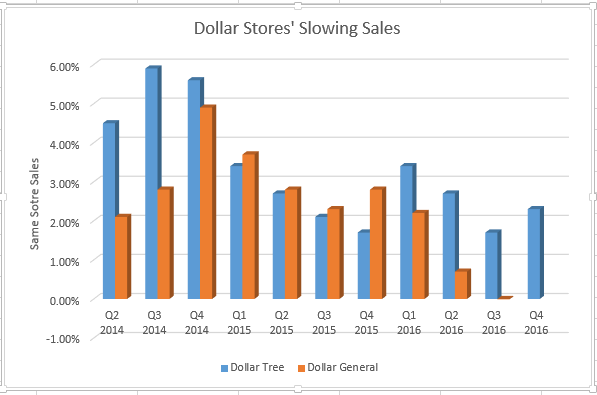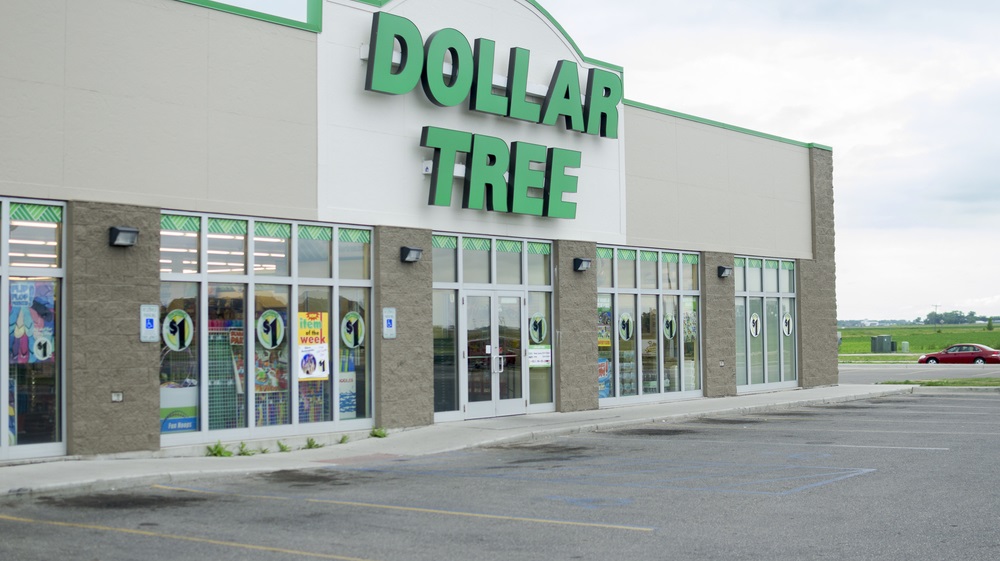Lately I have been talking about the challenges of luxury retail, malls and other large-format retailers in today’s economic environment. But increasingly, the stars are lining up in a way that will not spare another key group of companies in the retail sector — dollar stores.
That is significant because discounters such as Dollar Tree Inc. (Nasdaq: DLTR) and Dollar General Corp. (NYSE: DG) have been bona fide growth stories for years. They carved out a widening niche in the minds of consumers (including my own family) as the place to go for all manner of cheap goods, from party favors to cleaning supplies.
But both companies now have over 13,000 stores. Are they reaching a point of maximum saturation?
At a glance, the dollar stores would seem to have everything going for them. Dollar Tree, for instance, reported its fourth-quarter results in recent days. Overall sales rose 5% to more than $5.6 billion, with profits totaling $1.36 a share for the period.
But “same-store sales” — which measure sales gains on a per-store basis — tell a different story:

(Source: Dollar Tree/Dollar General reports)
And Dollar General, which reports its results for the fourth quarter in another week, actually saw its same-store sales number dip fractionally into the negative in the third quarter. By that measure, it was the chain’s worst performance since 2007.
So what’s going on?
Discounting Goes “Mass Market”
It’s part of a shift in the U.S. economy — one we’ve been warning about for a long time. Overindebted American consumers are no longer willing to pay full price for everyday products, not when there’s a home mortgage, a student loan, and a lease or car loan to pay every month.
You might say, well, that’s what the dollar stores are all about.
That’s true. But the problem now is that the rest of the retail sector is “following the money” to where their core customers are. It’s a race to the bottom. Now, every company in food retail can’t afford not to have the lowest prices around.
That’s nothing new for Wal-Mart, of course. But as Bloomberg noted a while back, Kroger is also now cutting prices to compete with Wal-Mart. Even Costco recently raised the price of its memberships by $5 to help offset the price war’s effect on its bottom line.
Perhaps most telling of all, Whole Foods — with its shares down by more than 50% from its 2013 all-time highs — is in the midst of an effort to woo back customers with discounts and digital coupons. What happened to the old “Whole Paycheck” nickname? It disappeared with its customers’ dollars down the black hole of personal debt.
The German food-retail giant Aldi is taking aim at the same growing category of price-conscious American consumers. The chain is on pace to more than triple its number of U.S. stores from 650 to 2,000 by next year. And Lidl, a close Aldi competitor in Europe (where it has 10,000 stores) will open its first 20 stores in the U.S. this summer, with a rapid expansion planned for the following quarters.
For the dollar stores, the “grocery wars” are part of an epic squeeze. With more than 13,000 stores each, both Dollar General and Dollar Tree have the largest national footprint of any retail chain in the United States. Both want to add hundreds more in the next year alone. But their best years of growth may be behind them as the dollar-store philosophy goes “mass market,” attracting much bigger competitors.
Kind regards,
Jeff L. Yastine

Editorial Director








